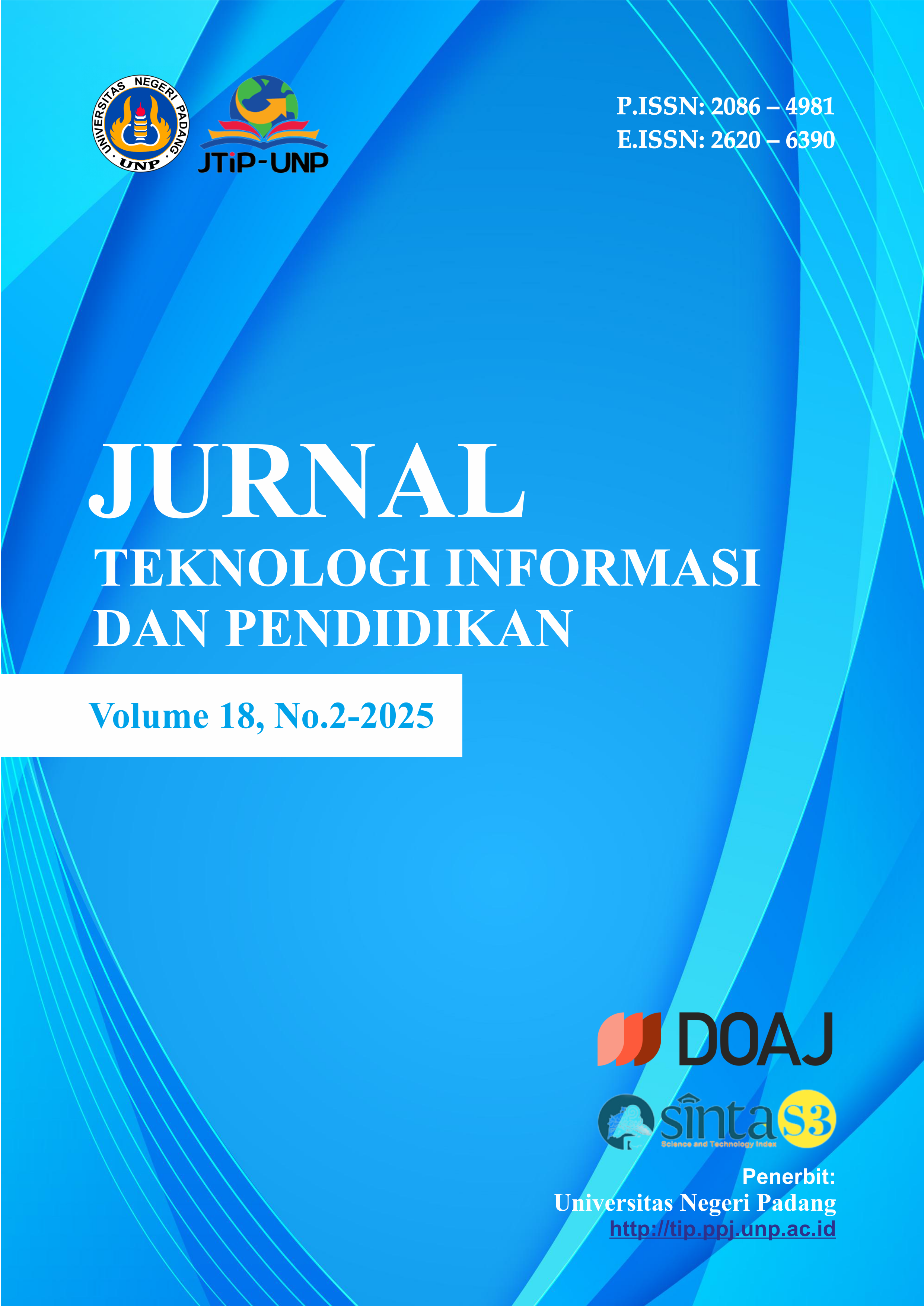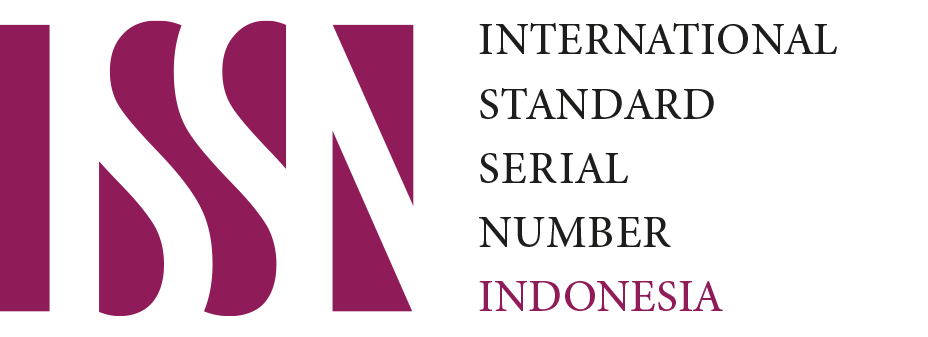Analysis of Determinants Influencing the Adoption of 5G Technology in Bandung City
DOI:
https://doi.org/10.24036/jtip.v18i2.976Keywords:
5G, Technology Adoption, Bandung, OrOdinal Logistic RegressionAbstract
This research aims to examine determinants influencing the adoption of 5G technology among users in Bandung City. As Indonesia begins its transition toward advanced communication infrastructure, understanding user behavior and adoption level becomes important, especially in Bandung city. Use a quantitative approach, this research collected data from 206 respondents through a structured questionnaire designed to capture various technical and non-technical factors. Eight independent variables were analyzed infrastructure availability, technology awareness and knowledge, network service quality, service and device cost, perception of security and privacy, potential and benefits offered by 5G, user experience, and social influence. Data analysis was performed using ordinal logistic regression to determine which factor adopted 5G technology. The results reveal that network service quality, perception of security and privacy, and social influence have a statistically significant negative effect on adoption levels. Meanwhile, the remaining variables showed no significant influence. Based on the research findings, the article provides recommendations such as improving network service quality, optimizing security and privacy, and increasing public awareness campaigns to address user concerns and support broader adoption of 5G technology. These efforts are expected to enhance user experience and accelerate the implementation of 5G in support of smart city development in Bandung.
References
N. H. Hari, F. P. E. Putra, U. Hasanah, S. R. Sutarsih, and Riyan, "Telecommunication Network Transformation with 5G Technology: Challenges, Potentials, and Implications," Jurnal Informasi dan Teknologi, vol. 5, no. 2, pp. 146-150, 2023, doi: 10.37034
F. P. E. Putra, M. Riski, M. S. Yahya, and M. H. Ramadhan, " Getting to Know the Latest Wireless Network Technology 5G Technology," Journal of Information Systems and Technology, vol. 5, no. 2, pp. 167–174, Jul. 2023.
E. Supriatna, M. Z. Qadri, E. Haviana, A. Dani, and A. N. Q. Azisah, "The Role of 5G Technology in Driving Digital Economic Growth and Industrial Transformation," J-CEKI: Jurnal Cendekia Ilmiah, vol. 3, no. 4, pp. 2120-2128, Jun. 2024.
Badan Pusat Statistik (BPS), "Jumlah Pelanggan Telepon Indonesia menurut Jenis Penyelenggaraan Jaringan," 2023.
A. A. Wahyudi, Y. R. Widowati, and A. A. Nugroho, "SMART CITY IMPLEMENTATION STRATEGY IN BANDUNG CITY," Journal of Geography Ideas, vol. 18, no. 1, pp. 95-106, Mar. 2022.
E. M. Rogers, “Diffusion of Innovations”, 4th ed. New York, NY, USA: Free Press, 1995.
J. Prabowo, F. Dahmir, A. Krisnowo, and M. Taufik, "5G Technology Study in Infrastructure as Part of Industry," SMI Management, vol. 20, no. 1, pp. 80- 84, Feb. 2025.
M. F. Shahzad, S. Xu, K. I. Khan, dan M. F. Hasnain, “Effect of social influence, environmental awareness, and safety affordance on actual use of 5G technologies among Chinese students,” Scientific Reports, vol. 13, no. 22442, pp. 1–17, 2023, doi: 10.1038/s41598-023-50078-4.
S. K. Shah, T. Zhongjun, A. Sattar, dan Z. XinHao, “Consumer’s intention to purchase 5G: Do environmental awareness, environmental knowledge and health consciousness attitude matter?” Technology in Society, vol. 65, p. 101563, Apr. 2021, doi: 10.1016/j.techsoc.2021.101563
Trikolas, A. Sungkowo, R. R. Al Hakim, and A. Jaenul, "Advantages, Disadvantages, Opportunities of 5G Technology in Indonesia," INSOLOGI: Jurnal Sains dan Teknologi, vol. 1, no. 1, pp. 43-49, Feb. 2022, doi: 10.55123/insologi.v1i1.145.
Y. Aprilianto, M. Asrol, and F. E. Gunawan, "Economic Feasibility Analysis in Developing 5G Infrastructure and Locations in Indonesia," TEM Journal, vol. 10, no. 1, hlm. 121-132, Feb. 2021, doi: 10.18421/TEM101-15.
M. Rizky, S. A. Fadillah, Juniwan, M. Y. Habibi, and D. Aribowo, "ekn of 5G Network Technology in Indonesia," Jupiter: Publication of Industrial Engineering, Electrical Engineering and Informatics, vol. 2, no. 3, pp. 58-68, May 2024, doi: 10.61132/jupiter.v2i3.279.
V. Sahu, N. Sahu, and R. Sahu, "Challenges and Opportunities of 5G Network: A Review of Research and Development," American Journal of Electrical and Computer Engineering, vol. 8, no. 1, hlm. 11-20, 2024, doi: 10.11648/j.ajece.20240801.12.
F. Sudirjo, D. E. Fajariana, A. Y. Vandika, and U. Sagena, "The Effect of Digital Transformation, User Experience, and User Interface on Customer Loyalty in Technology Startups in Bandung," West Sci. Interdiscip. Stud., vol. 2, no. 9, pp. 1850–1856, Sep. 2024, doi: 10.38813/wiss.2098.1385.
K. Karina, R. Efendi, L. Chainani, and I. M. Sari, "Implementasi Regresi Logistik Ordinal Pada Sistem Pembelajaran Daring Di Era COVID-19 terhadap Kesehatan Mental Guru SD di Kota Pekanbaru," Jurnal Sains Matematika dan Statistika, vol. 7, no. 1, pp. 65–74, Jan. 2021, doi: 10.24014/jsms.v7i1.11786.
F. Nurfadila and A. S. Pramudita, "The Effect of Service Quality and Satisfaction on Customer Loyalty at PT XYZ with Ordinal Logistic Regression Analysis Method," Jurnal Logistik Bisnis, vol. 12, no. 1, pp. 94–104, May 2022, [Online]. Available: https://ejurnal.poltekpos.ac.id/index.php/logistik/.
M. T. D. Winarko and A. Y. Kartini, "Analysis of user satisfaction of parking attendants at the Bojonegoro Transportation Agency using ordinal logistic regression," STATKOM: Journal of Statistics and Computation, vol. 1, no. 1, pp. 31–41, Jun. 2022.
N. Niken, W. Somayasa, H. Budiman, Ruslan, and G. N. A. Wibawa, “Uji goodness of fit dengan statistik Pulkstenis-Robinson dalam model regresi logistik ordinal kecelakaan lalu lintas,” Jurnal Matematika, Komputasi dan Statistika, vol. 4, no. 1,pp.571–576,Jan.-Apr.2024.
W. Kautsari, I. Anggraeni, and R. Susanti, " Prediksi Tingkat Keparahan Anemia pada Ibu Hamil Trimester I dengan Menggunakan Model Logit Regresi Logistik Ordinal," Jurnal Keluarga Berencana, vol. 8, no. 2, hlm. 79-86, 2023.
W. Kautsari, I. Anggraeni, and R. Susanti, “Prediction of Anemia Severity Level in Pregnant Women in the First Trimester Using Ordinal Logistic Regression Logit Model,” Journal of Family Planning, vol. 8, no. 2, pp. 79–86, 2023.
Downloads
Published
How to Cite
Issue
Section
License
Copyright (c) 2025 Jurnal Teknologi Informasi dan Pendidikan

This work is licensed under a Creative Commons Attribution-ShareAlike 4.0 International License.















.png)














